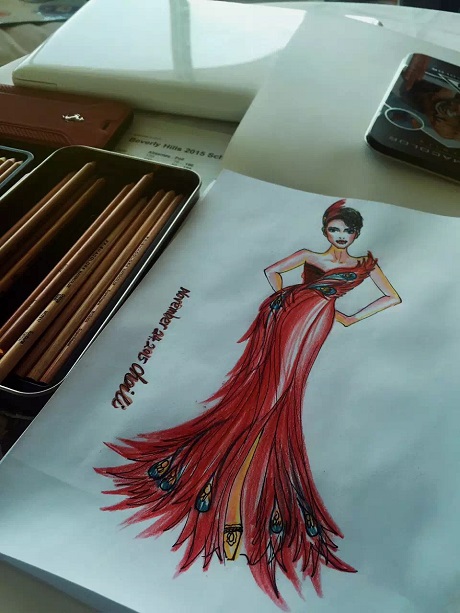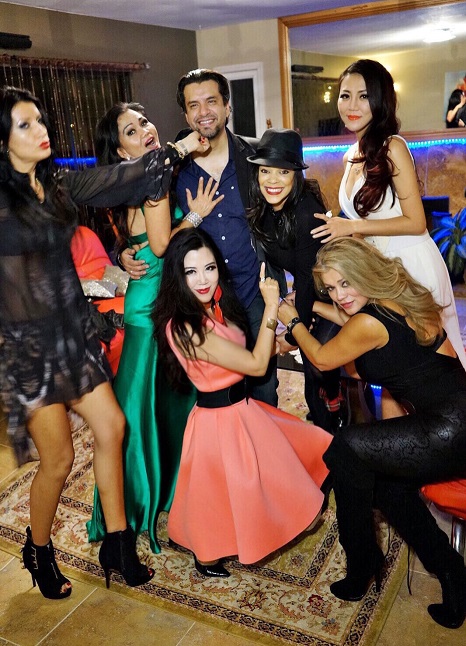The “spirit of the craftsman” in a post-profit era
Interview with Chai Li, President of CHAILI World Fashion United Investment Group Limited
Mar 07, 2017 | by Zhao Zihan
-
Someone said “she is a book”;
-
Someone said “she is a luxury”;
-
She, began to cut fabrics at the age of 3, read the world famous classics at 9, and write poetry at 12;
-
She, was both a student and a lecturer in her university life;
-
She, made design for an international famous advertising company;
-
She, won the Chinese Weaving Design Awards for her graduation works;
-
She, signed with the famous international fashion design master Junko Koshino after working a year later;
-
She, served as Art Director of a famous French brand and Consultant of a well-known Italian brand for many years;
-
She, is President of CHAILI World Fashion United Investment Group Limited
She is Chai Li, a fashion designer of unique personality, who serves as Chief Designer of famous brands at home and abroad, Professional Manager, Brand Consultant, Review Expert, Visiting Professor, ...
Chai Li presents a good interpretation to the spirit of the craftsman in fashion industry, and China Textile found an opportunity to have an interview with her to share her success as well as her viewpoint on craftsman’s spirit.

Chai Li’s father was a famous painting artist, allowing her frequent access to a variety of art galleries and museums. Unconsciously influenced by what she constantly saw and heard, Chai Li was endowed with much more perception than the children of her age. “I began to learn to paint when I was only about three or four years old, and would do dome hand-made things. At the age of eight or nine, I began to read the world-famous masterpieces, although it was hard for me to have a thorough understanding at that time. When I was 12 years old, I began to write poetry, while learning human anatomy and the history of the world art from foreign famous institutions.”
According to Ms. Chai, her father wished her to be an artist when she grew up and she was also brought up in a standard of an artist to study lyre-playing, chess, calligraphy and painting. However, she became a fashion artist halfway instead of completely following her father’s wishes.
To sum up the success of the cause, Ms. Chai said “I am lucky to have quality genes and receive good educations”.
“During my college period, I studied business management as well as clothing-related brand planning and marketing.” A year later after graduation, the internationally renowned designer Junko Koshino asked Ms. Chai to her office as an designer and let her be responsible for the cooperation of the Chinese market. “This cooperation was not only about brand design planning, also including brand management, brand planning, and a full set of management, which are closely related to personal comprehensive training and profession.” It is a great opportunity in the eyes of ordinary people, but if you do not have a few more lessons in college, this opportunity will never fall on your head.
“Many people think that fashion designer is a very beautiful career, and I have a lot of designer peers around who only would like to draw sketches, and reluctant to care about anything else such as what fabric to use, how to make in the factory, selling well or not, and so on. To their mind, it is someone else’s work, but not the designer’s.”
However, contrary to them, Ms. Chai would take all these things into her account: going to the factory, going to check the fabrics, going to the market to see the selling, going to investigate why the brand is preferred, and going to make it clear what color, what style, and what price are of the most popular. “So many people said to me that I was lucky, but actually, I think that all ‘luck’ is inseparable from my own efforts. There is no pie from the sky, and it may come a trap.”
“To my mind, as a designer, I should know more, and it is a disgraceful thing if I do not understand things related to my profession.” Perhaps it is her own strict requirements that have her blessed by the Lucky Goddess, from the chief designer, to the president assistant, brand consultant, CEO. She is always more than equal to a task among several roles, and even hit a record of “never lose money”.
Maybe, it is the so-called “spirit of the craftsman”.




Spirit of the craftsman and business interests need a balance
There is often a conflict between designers and entrepreneurs: designers think that entrepreneurs do not understand their design and personality, while entrepreneurs believe that they have a better understanding of the market and the design is not very much in line with their market demand, so that the products cannot be sold out.
First of all, I understand the entrepreneurs, because what they do is capital operation that requires maximized profits; however, if the designers prefer making strange things that cannot be accepted by the customers, to the entrepreneurs, losing money is a small thing, but for real business operations, it is not any new designer that can give him an immediate reverse to such a situation. However, many designers still adhere to their own personality, without considering the customer needs and thinking about whether the design is consistent with the corporate brand positioning. So, such a relationship has to suffer an unhappy breakup once the conflict comes.
I think, at this point, I am very lucky, for I was discovered very early by the world master who felt I know a lot and my design and style can bring her value. Indeed, it turned out to be true through my cooperation with the brands in Japan, France, Italy, the United States, as well as the cooperation with some well-known brands in China.
“Designers must be down-to-earth at the very beginning, but not to reach for what is beyond their grasp to be famous, for example, doing some very exaggerated things that do not meet the demand of the market to prove their sense of design. In fact, the designers just graduated must be integrated into the times and business. Why? Look at the Hollywood movies. The most profitable films must be the commercial ones. Then, why do our designers not make design in line with business? Have money, then go to focus on your own art and personality, and then create your own Romance or anything else, I believe this is a more realistic way. There is a gap between art and commerce, and art must be higher than life.”
At present, the domestic design environment is still just as a “newborn baby”, requiring constant feeding from the industry and big groups. But the reality is that many designers are eager to be independent, or forced to be independent, incapable of drawing enough nutrients, finally dying on the vine. “The times are real, and we are in a happy time, catching up with the country’s good development direction. It takes time for China’s economy to come out of the bubbles to the recovery, but I believe that the next five to ten years will be the best post-profit period for garment and other fields in China, while ten more years later might not be better, just like the Europe and the United States whose development space has already been really limited.”
Designers and entrepreneurs should cooperate based on mutual understanding and mutual balance, rather than conflict with each other which is equivalent to killing each other and deviated from the spirit of the craftsman .
“As a song goes, ‘let people who know you love you’, China needs love, and credibility will be established in love. If there is no persistent craftsman spirit, no sense of responsibility and mission, and no dedication to be responsible for the customers, but only to consider their own interests, then the market will still be virtual. The post-profit era is derived from reality, rather than the kind of outbreak before. I am very happy that for so many years I have come to establish my own good personal reputation. Some entrepreneurs and associations would like to commission me to acquire some overseas brands, because they believe that I am top professional in this area and proficient in the market, customers, and the textiles.”
According to Ms. Chai, now her haute couture customers are almost recognizing herself as a brand. “I think in the future we personally will be a very good brand, or an IP.”

Chinese famous star Wu Xiubo (Left) and Chai Li (Right)
Spirit of the craftsman needs innovation based on continuation of the traditional soul
Ms. Chai stated that we cannot only adhere to the traditional spirit of the craftsman, but have to be innovative with a sense of the trend; after all, the times are changing. For example, the generation after 50s and 60s were the main clothing consumer group before, followed by after 70s and 80s as well as the younger generation respectively with the evolution of time. Accordingly, we certainly cannot only adhere to the traditional clothes, but new styles, high-tech materials, as well as functions and colors that show unique personality are required.
The era is changing, therefore, to keep up with the times, the old clothing enterprises must have the outdated equipment updated timely. Innovation is a must in the future, not only in terms of high-tech materials, but also the design. “In the coming days, multi-capability designers will enjoy a better future and have a longer way to go, while the previous mechanical imitation will come to an end.”
Ms. Chen told the reporter that currently she is studying finance and the economy, and as far as she knows, China’s current mainstream growth assets are still financially oriented, “So we should consider how to combine the traditional and finance dialectically.” For example, online shop is hot now, but to do online shop blindly is inappropriate, for the physical store of advantages is certainly to go further. What we should do is to better match with the Internet, to combine with automation and capitals, and to better integrate the online and the offline following the footsteps of the times, instead of following whatever makes more money blindly.
Premier Li Keqiang introduced the concept of the “spirit of the craftsman” during his government work report during the fourth session of the 12th National People’s Congress. Premier Li mentioned that we should encourage enterprises to use custom-tailored and flexible production processes and to foster a craftsmanship spirit of striving for the best, so that we can create our brand products.
Recently, our manufacturing industry is big but not strong and it is weak in independent innovation. To carry forward the spirit of the craftsman will drive China from a manufacturer of quantity to a manufacturer of quality.
Chai Li stressed that the spirit of the craftsman needs to be re-recognized in the post-profit era, and only the spirit that can continue the traditional soul and make innovations is more in line with the future era.



